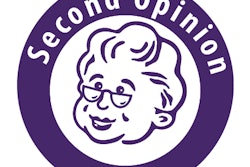
Are current decision aids used to guide CT lung cancer screening biased against the exam? A proponent for lung screening has developed two new decision aids that he believes more accurately reflect the benefits and harms of the exam -- and could boost screening uptake in eligible individuals.
Dr. Frederic Grannis from the City of Hope Helford Clinical Research Hospital in Duarte, CA, shared a pair of poster presentations on the decision aids at the recent 2018 World Conference on Lung Cancer in Toronto.
The chronically low participation rates for CT lung screening in the U.S. have disconcerted proponents of the exam for years. Though the U.S. Centers for Medicare and Medicaid Services (CMS) provides full coverage for the test, it also stipulates that eligible individuals must fulfill a shared decision-making visit that involves the use of a decision aid by the physician.
The majority of currently available decision aids, however, are not only challenging to understand but also appear to be biased against CT lung screening by emphasizing the possible negative consequences of screening considerably more than the benefits, Grannis told AuntMinnie.com.
"There is no strong evidence for any benefit to shared decision-making and decision aids in the medical literature," he said. "When there is no evidence for [these procedures] -- and strong potential that the regulation will do harm -- the best option may be to remove the regulation."
Understanding that these Medicare rules are nevertheless required for reimbursement, Grannis and colleagues developed two new decision aids to provide more accurate, up-to-date information regarding CT lung screening to patients and physicians.
The first decision aid is intended for primary care physicians who refer individuals for screening. It offers a brief summary of essential points about screening, including eligibility criteria, the role of the referring physician, and an updated description of the potential risks and benefits of screening.
The second decision aid is geared toward patients who fit the eligibility criteria for CT lung cancer screening. The aid highlights relevant information in 12 distinct sections in a question-and-answer format and covers a range of topics, such as differences in the management of potential lung cancer with screening versus without screening, the balance between the benefits and risks of screening, and next steps for those who choose the exam.
Many existing decision aids misinterpret the 20% mortality reduction from the National Lung Screening Trial to mean that only one in five people diagnosed with lung cancer survive for five years, Grannis noted. It would be more accurate to say that 80% of people diagnosed with lung cancer via CT screening will survive at least 10 years, based on research from the International Early Lung Cancer Action Program (I-ELCAP).
"One can expect 80% 10-year actuarial survival for people who are compliant with annual CT screening and follow recommendations from either the I-ELCAP protocol or National Comprehensive Cancer Network (NCCN) guidelines," he said.
If patients at high risk of lung cancer participate in shared decision-making using the decision aids presented, clinicians can anticipate an increase in screening uptake, with likely increases in future survival, Grannis concluded.



















